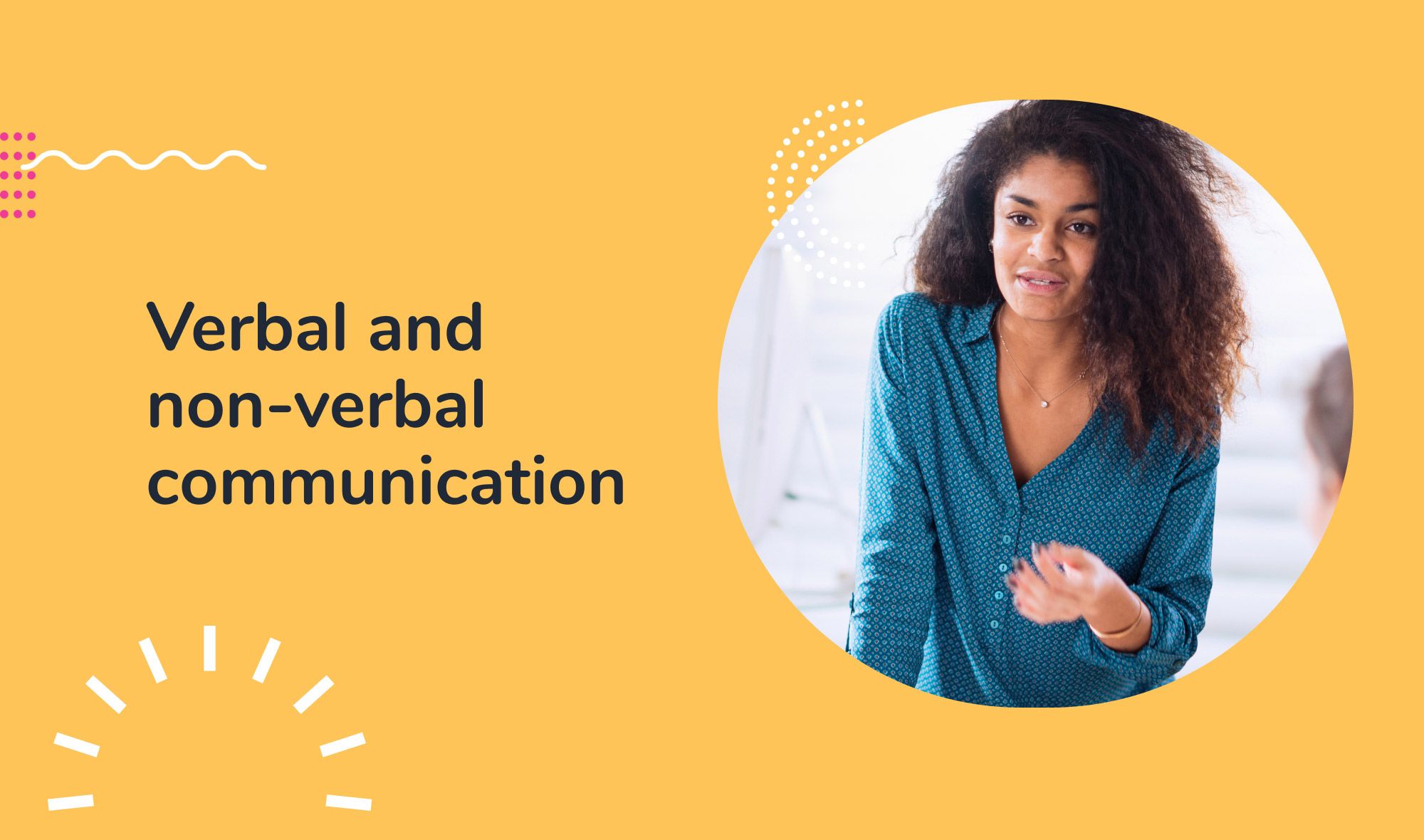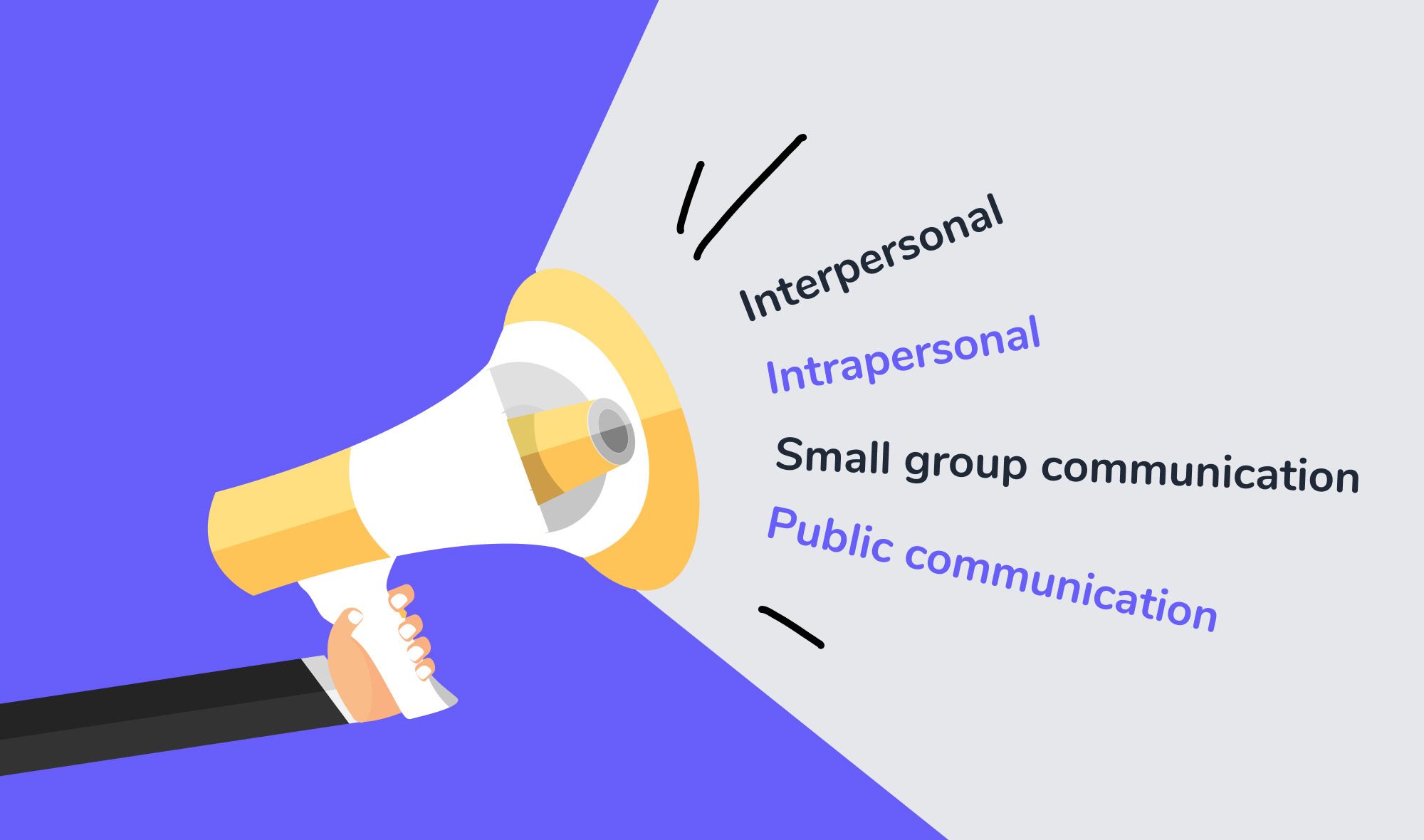
In today's digital age, we have access to a myriad of communication tools that make it easier than ever to connect with people around the world. From text messages to video calls, we can communicate with anyone, anywhere, anytime. However, despite the convenience and versatility of these tools, one form of communication remains the most effective for building relationships, conveying emotions, and sharing ideas: face-to-face verbal communication.
When we communicate with someone in person, we have the opportunity to use a wide range of nonverbal cues, such as facial expressions, gestures, and tone of voice, to convey our message. This makes connecting with others and building trust easier, which is essential for any successful relationship. However, mastering the art of face-to-face verbal communication can be challenging, especially if you struggle with nervousness, shyness, or a lack of practice.
In this blog post, we will explore some practical tips to help you improve your verbal communication skills so that you can confidently and effectively communicate with others in any situation. Whether you're giving a presentation, having a job interview, or simply chatting with friends, these tips will help you become a more confident and persuasive communicator.
Join our Newsletter
Transform your career with our personal growth insights. Get one valuable tip right in your inbox every Saturday morning.
Importance of effective verbal communication

Effective verbal communication is essential for success in both personal and professional settings. When we communicate verbally, we use words and tone to convey our thoughts, feelings, and ideas to others. If we are not effective in our most basic verbal communication skills, our message may not be understood or may be misunderstood, which can lead to various problems.
In the workplace, effective verbal communication is critical for building strong relationships with colleagues, clients, and customers. If you are not able to articulate your ideas clearly, you may struggle to convince others of your point of view or to negotiate successfully. This can lead to misunderstandings, conflicts, and missed opportunities.
In personal relationships, effective verbal communication is equally important. When we communicate well with our friends, family, and romantic partners, we can build strong bonds of trust and understanding. However, if we struggle to communicate effectively, we may find it difficult to connect with others or resolve conflicts in a healthy way.
On the other hand, if verbal communication is not prioritized or if it is done poorly, it can lead to a wide range of problems. For example, misunderstandings can cause confusion, mistrust, and resentment. Poor oral communication can also lead to conflicts, missed opportunities, and decreased productivity.
Difference between verbal and non-verbal communication

One significant difference between verbal and non-verbal communication is that verbal communication tends to be more explicit, while non-verbal communication tends to be more implicit. Verbal communication relies on words and language to convey meaning, while non-verbal communication relies on visual and auditory cues. For example, a person's facial expression or tone of voice can convey an attitude or emotion that may not be explicitly stated in their words.
Another significant difference between verbal and non-verbal communication is that verbal communication can be easily recorded or documented, while non-verbal communication is more ephemeral. Verbal communication can be recorded in writing or through audio or video recordings, making it easy to refer back to later. Non-verbal communication, on the other hand, is often fleeting and can be difficult to capture or reproduce.
In summary, verbal and nonverbal communication are both essential components of effective communication. Verbal communication relies on language and words, while non-verbal communication relies on visual and auditory cues. Understanding the differences between these two forms of communication can help individuals become more effective communicators in both personal and professional settings.
4 types of verbal communication

Interpersonal
Interpersonal communication is a type of verbal communication that occurs between two or more people in a face-to-face setting. It involves the exchange of information, ideas, and emotions through verbal and nonverbal cues. Examples of interpersonal communication include conversations between friends, family members, or colleagues.
Intrapersonal
Intrapersonal communication describes the internal dialogue that occurs within an individual. It entails active listening and the use of words to reflect on one's own thoughts, feelings, and experiences. Intrapersonal communication might mean chatting to oneself or participating in self-reflection.
Small group communication
Small group communication is a sort of organized verbal communication that occurs between more than two persons. It includes the verbal and nonverbal sharing of information, ideas, and opinions. Meetings, focus groups, and other team gatherings and discussions are examples of small-group communication.
Public communication
Public communication is a type of verbal communication that occurs between a speaker and a large audience. This use of language conveys information, ideas, and emotions to a group of people through speeches, lectures, and presentations.
Join our Newsletter
Transform your career with our personal growth insights. Get one valuable tip right in your inbox every Saturday morning.
Barriers to verbal communication
Effective verbal communication is essential for building strong relationships, expressing ideas and emotions, and achieving success in both personal and professional settings. However, there are several barriers that can hinder the effectiveness of verbal communication. Some common barriers to verbal communication include:
Language barriers:
Differences in language, dialect, or accent can make it challenging for individuals to understand each other's messages accurately, especially when communicating with individuals who speak a different native language or when communicating across cultural boundaries, leading to potential cultural conflict.
Physical barriers:
Distance is one physical barrier that can interfere with verbal communication. When individuals are far apart, it can be difficult to hear or understand each other. This is especially true in large rooms or outdoor spaces where sound can be easily dispersed. In these situations, it can be helpful to use a microphone or other amplification tools to ensure that everyone can hear and understand the message.
Noise is another physical barrier that can interfere with verbal communication. Background noise, such as music, traffic, or machinery, can make it challenging to hear and understand a conversation. In these situations, it may be helpful to move to a quieter location or to use noise-canceling headphones to block out the background noise.
Obstructions, such as walls or other physical barriers, can also interfere with verbal communication. For example, in a large conference room or auditorium, it may be difficult for individuals in the back to hear and understand the speaker. In these situations, it may be helpful to use video conferencing tools or to provide written materials to ensure that everyone has access to the information.
Psychological barriers:
Anxiety and fear are common psychological barriers that can hinder effective verbal communication. For example, a fear of public speaking may make it challenging for an individual to express their ideas in a public setting. This fear can lead to physical symptoms such as sweating, shaking, or stuttering, which can further undermine their confidence and ability to communicate effectively. In these situations, it can be helpful to practice relaxation techniques, such as deep breathing, before speaking in public, or to seek support from a coach or mentor.
Mistrust is another psychological barrier that can interfere with effective verbal communication. If communication takes place and individuals feel that they cannot trust the person they are communicating with, they may be less likely to share information or express themselves openly. In these situations, it is essential to build trust and establish a rapport with the other person before attempting to communicate effectively.
Cultural barriers:
Cultural differences can pose a significant barrier to effective verbal communication. Different cultures have different spoken communication styles, expectations, and norms, which can lead to misunderstandings, misinterpretations, or even offense if not understood and taken into account.
Join our Newsletter
Transform your career with our personal growth insights. Get one valuable tip right in your inbox every Saturday morning.
One significant difference between cultures is the use of language. Even if two individuals are speaking the same language, they may have different dialects or idioms that can be challenging to understand. In some cultures, direct communication is preferred, while in others, indirect communication may be more common. This can lead to misunderstandings if individuals are not aware of these differences and adjust their communication style accordingly.
Semantic barriers:
Semantic barriers occur when words are interpreted differently by different people due to cultural or contextual differences. This can happen when words have different meanings or connotations in different cultures or contexts. For example, a word or phrase may have a different meaning in different parts of the world or even in different subcultures within the same country. This can lead to confusion and misunderstanding in verbal communication.
To overcome semantic barriers to effective verbal communication, it is essential to be aware of the different meanings and connotations of words in different cultures or contexts. It is also helpful to clarify any misunderstandings by asking questions and paraphrasing to ensure that both the speaker and the listener have a shared understanding of the message.
Perception barriers:
One factor that can contribute to perception barriers is cultural background. Individuals from different cultural backgrounds may have different assumptions, values, and beliefs that influence how they interpret messages. For example, in some cultures, direct visual communication is preferred, while in others, indirect communication is more common. This can lead to misunderstandings when individuals from different cultures communicate with each other.
Personal experience is another factor that can contribute to perception barriers. Individuals' past experiences can influence how they interpret messages. For example, if an individual has had negative experiences with a particular topic or person, they may be more likely to interpret messages related to that topic or person in a negative way.
Emotions can also play a role in perception barriers. If an individual is feeling angry, sad, or frustrated, they may be more likely to interpret messages in a negative way. This can lead to misunderstandings and can make effective communication more challenging.
Prior knowledge is another factor that can contribute to perception barriers. Individuals may have preconceived ideas or assumptions about a particular topic or person that can influence how they interpret messages. This can lead to misunderstandings when the speaker's intended message does not align with the listener's prior knowledge or assumptions.
Physical or health barriers:
Hearing or speech impairments can make it challenging for individuals to communicate effectively verbally. Individuals with hearing impairments may struggle to hear and understand what others are saying. This can lead to misinterpretations or misunderstandings, making it difficult for them to participate in conversations. Similarly, individuals with speech impairments may have difficulty expressing themselves verbally, which can lead to frustration and further communication challenges.
Cognitive limitations can also pose a barrier to effective verbal and written communication. Individuals with cognitive limitations may struggle to understand and process information, making it challenging for them to communicate effectively. This can lead to misunderstandings and misinterpretations and may result in frustration or confusion for both the speaker and the listener.
Illness can also impact verbal communication. For example, individuals who are experiencing pain or discomfort may struggle to concentrate or may not be able to communicate effectively. Similarly, individuals who are experiencing mental health challenges may struggle to express themselves verbally or may have difficulty understanding what others are saying.
How can I improve my verbal communication skills?
Whether you are tasked with giving public speeches, leading small group discussions or meetings, or simply speaking with a close colleague or friend, practicing the strategies below can help you become a more effective communicator of the intended message and build stronger connections with others.
Questioning
One effective way to improve your verbal communication skills is to practice asking questions. Asking open-ended questions can help you gather information, understand others' perspectives, and demonstrate an interest in what others are saying. To ask effective questions, make sure to listen actively, avoid interrupting, and ask follow-up questions to clarify your understanding.
Reflecting and clarifying
Reflecting and clarifying can help you ensure that you are interpreting others' messages accurately. Reflecting involves paraphrasing or summarizing what the speaker has said to ensure that you have understood it correctly. Clarifying involves asking questions to ensure that you have understood the speaker's message correctly. Reflecting and clarifying can also help demonstrate that you are actively listening and engaged in the conversation.
Summarizing
Summarizing can be an effective way to reinforce key points and ensure that everyone is on the same page. Summarizing involves restating the main points of a conversation, meeting, or presentation to ensure that everyone has a clear understanding of the topic. Summarizing can also help you remember important details and can be a useful tool for taking notes during a conversation or meeting.
Reinforcement
Reinforcement involves using positive feedback or gestures to encourage and support the speaker. Reinforcement can help build trust and positive relationships, and can also help motivate others to continue communicating effectively. Some examples of reinforcement include nodding your head, making eye contact, and providing positive feedback such as "I appreciate your insight" or "That's a great point."
Conclusion
Whether you're a student, a professional, or simply someone who wants to communicate better in social settings, investing time and effort in improving your verbal communication skills can pay off in many ways. By analyzing your communication style and building upon your strengths, you can become a more confident and persuasive communicator, and enhance your interpersonal encounters.
Remember, effective verbal communication is a learned skill that can be improved with practice, patience, and self-reflection. So, start working on your verbal communication skills today and experience the positive impact it can have on your personal and professional life.
For a deeper understanding of interpersonal dynamics, it's important to recognize the signs of gaslighting, a manipulative tactic that can undermine effective communication. Explore real-world gaslighting examples and experiences in our blog post on Unveiling the Dark Art of Gaslighting."
Join our Newsletter
Transform your career with our personal growth insights. Get one valuable tip right in your inbox every Saturday morning.
Read more about: Life Coaching
About Remy Meraz
Remy Meraz, co-founder, and CEO of Zella Life, is a visionary leader who leveraged corporate glass ceiling challenges as a woman of color to drive systemic change.
While leading and cultivating high-performance teams from VC-backed startups to Fortune 500, she consistently faced obstacles such as inadequate mentorship, lack of psychological safety, and non-personalized training. Taking matters into her own hands, she turned to executive coaching and NLP training. This life-changing growth experience led to breaking leadership barriers and a passion for cognitive psychology.
Motivated by her experiences, she co-founded Zella Life, an innovative AI-driven coaching platform bridging the talent development gap by enhancing soft skills and emotional intelligence (EQ) in the workplace.
Her vision with Zella Life is to transform professional development into an inclusive and impactful journey, focused on the distinct needs of both individuals and organizations. She aims to promote advancement and culture change by ensuring every professional's growth is acknowledged and supported.
Today, Remy is recognized as an influential innovator, trainer, mentor, and business leader. Under her leadership, Zella Life has delivered significant measurable outcomes for numerous well-known brands. This track record of positive outcomes garnered attention and funding from Google for Startups and Pledge LA, establishing Zella Life as a pivotal force in the learning and development arena tackling and resolving fundamental talent development issues for organizations of all sizes.